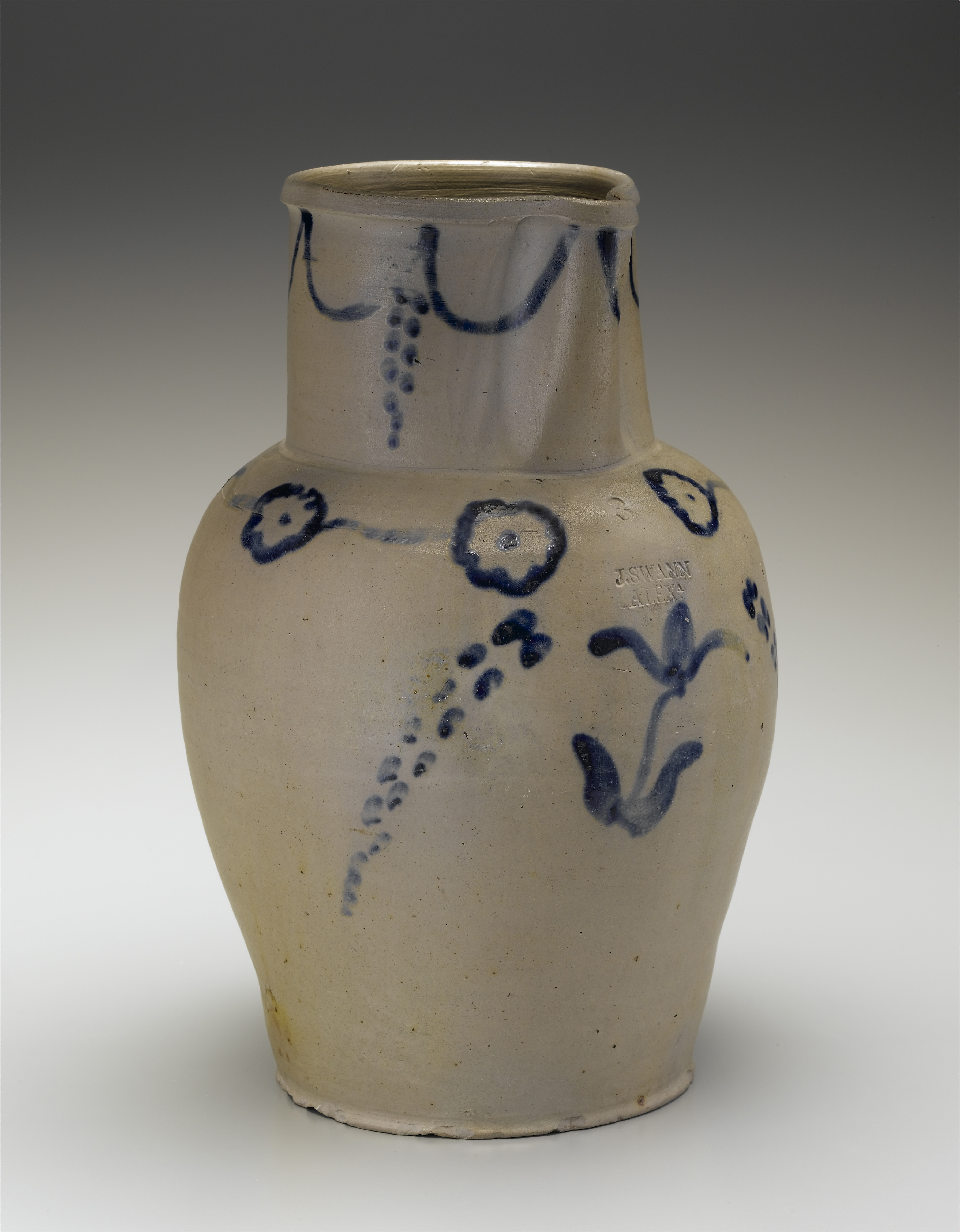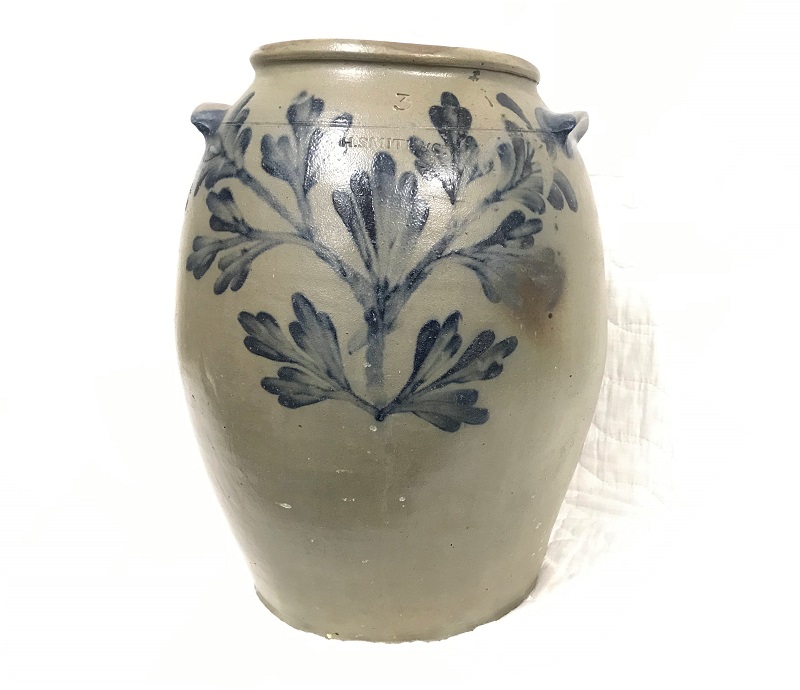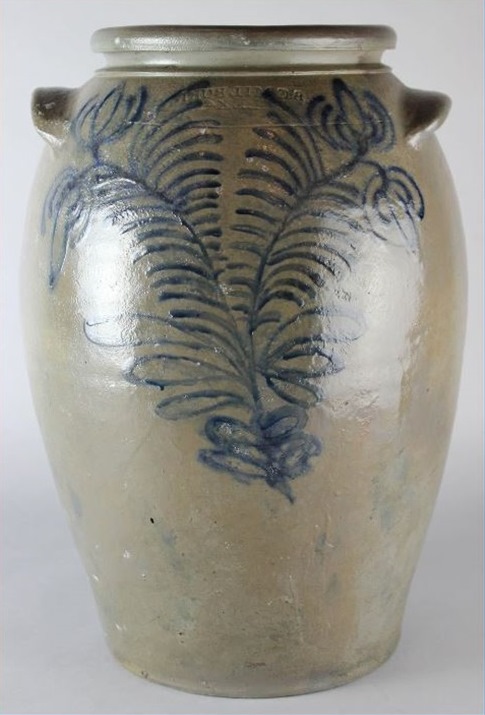
Alexandria History Museum: Alexandria Stoneware Collection
Alexandria Stoneware Collection
Stoneware pottery was important equipment in the kitchens and pantries of the 19th century. It was indispensable for householders of all ethnic, social, and economic backgrounds. Acidic foods such as vinegar, sauerkraut or pickles were made and stored in stoneware. Cakes were kept fresh in short, wide crocks with straight sides and lids called cake pots or firkins. The pottery’s smooth, non-porous surface was easy to clean, so it was perfect for milk pitchers, jugs, and chamber pots. In Alexandria, vessels of many different sizes and shapes were made by at least eleven potters, at seven sites, during the first three quarters of the 19th century.
John Swann
John Swann’s earliest stoneware consisted of large bulbous jugs and jars, usually dipped to the shoulder in a brown iron-oxide wash, which dripped down the surface of the pot. The jugs have ringed necks, and jars have round or angled rims. The earliest vessels do not have a maker’s mark, but the distinctive rims and the use of iron wash help to identify them.
In 1819, Swann advertised “a great improvement to his ware,” and began to decorate his stoneware with simple blue floral and foliate designs, usually made up of very short brush strokes.

H. C. Smith & Co.
This jar’s decorative motifs are similar to pottery attributed to African-American potter David Jarbour -- indicated by the straight central flower stem and leaves extending from the stem at a 45 degree angle. Jarbour was employed at the pottery on Wilkes Street when it was owned by Hugh Smith. Smith was not potter, but a successful Alexandria merchant and civic leader. In addition to owning the pottery, his china shop on King Street sold locally made pottery and fine English ceramics.

B. C. Milburn
Benedict C. Milburn came to Alexandria from St. Mary’s County to apprentice with a potter, as did his predecessor at Wilkes Street, John Swann. Milburn may have worked at Wilkes Street with Swann as early as 1822. He took over operations by 1833 and purchased the business in 1841. Some of Milburn's designs were quite elaborate, and similar patterns were executed in brushed cobalt and using a new slip-trailing technique.
